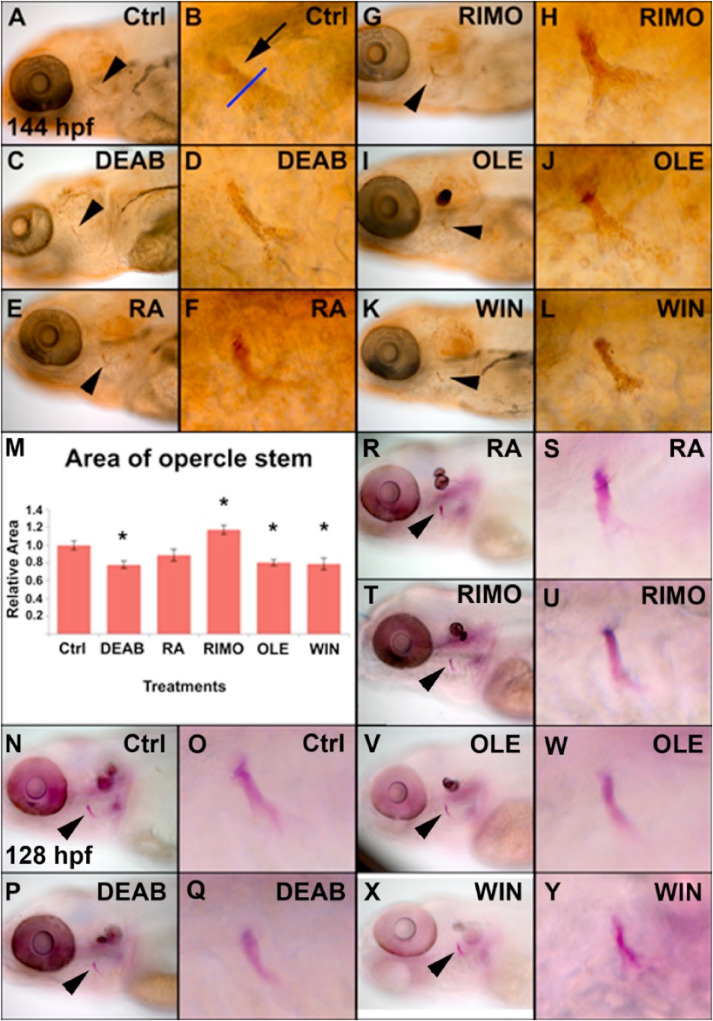Fig. 1 Modulation of the retinoic acid and endocannabinoid signaling pathways influence larval bone mineralization and calcification. Zebrafish were treated from 50 to 72 hpf with DEAB, RA, RIMO, OLE, and WIN and mineralization of the opercle (arrowhead) was detected at 144 hpf with von Kossa stain (A–L). Mineralization of the opercle stem was quantified (M, n = 10) from the area of labeling above the opercle fan, marked by the blue line (B, arrow) (See Supplemental Fig. 1 for a schematic representation of the positioning of the blue line in the opercle). Zebrafish embryos were treated from 50 to 72 hpf and stained with alizarin red at 128 hpf to detect calcification (N–Y, n = 10). The effects on calcification from DEAB, RA, RIMO, OLE, and WIN treatments are consistent with the effects on mineralization. Imaged zebrafish are a representation of zebrafish in their respective groups.
Reprinted from Molecular and Cellular Endocrinology, 529, Fraher, D., Mann, R.J., Dubuisson, M.J., Ellis, M.K., Yu, T., Walder, K., Ward, A.C., Winkler, C., Gibert, Y., The endocannabinoid system and retinoic acid signaling combine to influence bone growth, 111267, Copyright (2021) with permission from Elsevier. Full text @ Mol. Cell. Endocrinol.

